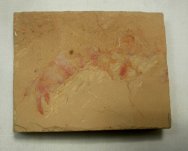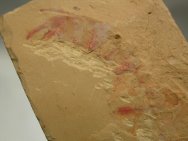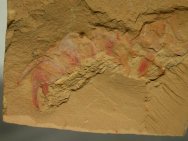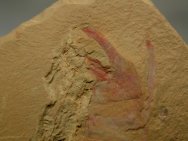Amplectobelua
symbranchiata
Phylum Uncertain,
Anomalocarididae
Geological
Time: Early Cambrian (~525 million years ago)
Size: 53
mm long
Fossil
Site: Guanshan Fauna, Lower most part of Wulongqing Formation, Caijiachong
Valley, Yieyatoung, Gangtoucun Village, Xiamacun Town, Kunming City, Yunnan
Province, China
| 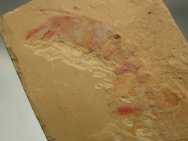 This
fossil comes from what has been termed the “Guanshan
Fauna”, found in the Wulongqing Formation. The Guanshan
Fauna shares many genera with the slightly older Chengjiang
Biota, but differs at the species level. The discovery of the
Chengjiang Biota by Hou Xian-guang in 1984 opened a window onto
a remarkable array of lifeforms from what is termed the Cambrian
Explosion. This
fossil comes from what has been termed the “Guanshan
Fauna”, found in the Wulongqing Formation. The Guanshan
Fauna shares many genera with the slightly older Chengjiang
Biota, but differs at the species level. The discovery of the
Chengjiang Biota by Hou Xian-guang in 1984 opened a window onto
a remarkable array of lifeforms from what is termed the Cambrian
Explosion.
This
is the grasping arm of one of the of the “Terrors Of The Cambrian”,
Amplectobelua symbranchaiata. The members of this 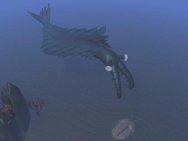 group
of enigmatic creatures are known from Asia, Australia, Europe, and
North America, and are thought by many to be closely allied with
the Arthropoda, though this view is not held by all researchers.
As of the publication of Hou’s book in 2004, some 30 examples
were known, with most fossil specimens being grasping arms like
seen here. Such spiniferous grasping appendages strongly suggest
carnivorous habits for this enismatic animal; also, some trilobites
from Utah bear evidence of bite
marks that have been attributed to its near relative Anomalocaris.
The primary difference between the two genera is that the spines
of Anomalocaris are branched, while those on Amplectobelua are unbranched,
just as seen here. group
of enigmatic creatures are known from Asia, Australia, Europe, and
North America, and are thought by many to be closely allied with
the Arthropoda, though this view is not held by all researchers.
As of the publication of Hou’s book in 2004, some 30 examples
were known, with most fossil specimens being grasping arms like
seen here. Such spiniferous grasping appendages strongly suggest
carnivorous habits for this enismatic animal; also, some trilobites
from Utah bear evidence of bite
marks that have been attributed to its near relative Anomalocaris.
The primary difference between the two genera is that the spines
of Anomalocaris are branched, while those on Amplectobelua are unbranched,
just as seen here.
|
|


